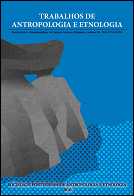Imagens do ser humano na pós-modernidade
Resumo
This paper aims to investigate the cinematic and conceptual factors of simulacrum that determine in cinema the postmodern models of representation. A fundamental issue in simulacrum theory (Braudillard, 1991) establishes that the postmodern society has replaced reality and meaning with signs and symbols, and that epistemic object of human experience is of a simulation of reality. Defining simulacrum as reality mediations implies to understand cinema medium in terms of the emergence of real.
To give raise to this hypothesis we will trace the epistemological framework in which simulacrum has emerged in cinema. Particularly, we will analyze the practice of simulacrum in Harun Farocki’s film “Images of the World and the Inscription of War” (1988). Methodologically, three dimensions of the
simulacrum theory in cinema will be explored: mental and physical cartographies (Deleuze, 2000); montage-image (Didi-Huberman, 2012); heterocopies (Foucault, 1986). It is across the articulation of these dimensions that we pretend to give raise to our initial premise: simulacrum in cinema is a epistemic
theory that grounds formally and conceptually in the image as well as in between real and semi real.



